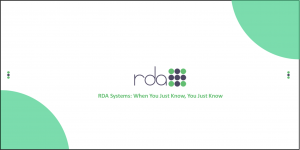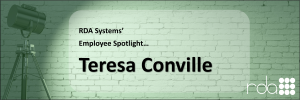In an age where technology is intertwined with every aspect of our lives, it’s especially crucial for K-12 school districts and small local governments to keep their digital tools sharp and in sync with their missions. This piece sheds light on five key strategies to not only keep your technology up to date but also ensure it’s working hard for you. From making the most of your ERP systems to weaving a fabric of innovation throughout your organization, we dive into how you can stay ahead of the curve, secure your digital assets, and foster a culture of continuous learning. With these approaches, your organization can not only meet the demands of today but also embrace the opportunities of tomorrow. Join us as we delve into these essential strategies, offering a roadmap for organizations to not only keep pace with technological advancements but to leverage them for greater success.
1. Leverage Your ERP Effectively
An effective ERP system is more than just a tool; it’s a strategic asset that, when fully utilized, can transform your organization’s operational efficiency. To ensure your ERP system is meeting your evolving needs, start by exploring its full range of capabilities. Many ERP systems come with additional modules designed for specific needs—whether it’s tracking student performance, managing transportation logistics, or streamlining financial operations. Identifying and implementing these modules can significantly enhance your ability to address current challenges.
Furthermore, engaging with users across your organization is crucial. Gathering feedback through surveys or focus groups with educators, administrators, and students can provide invaluable insights into the ERP’s effectiveness and areas for improvement. This feedback loop not only helps in fine-tuning the system to better meet your needs, but also encourages a sense of ownership and satisfaction among users.
Staying updated on the latest versions and features offered by your ERP vendor is another key strategy. These updates often include critical security enhancements and functional improvements that can boost efficiency and protect against emerging threats.
2. Continually Assess Your Needs
Staying ahead requires regular assessments to ensure your technology aligns with both current and future needs.
Conducting periodic technology audits is essential for evaluating your current infrastructure and software. These audits help identify areas where technology may be outdated, pose security risks, or fail to align with your strategic objectives. It’s about understanding where you stand today to make informed decisions for tomorrow. Use this list of must-have ERP features to determine whether your current technology is meeting your needs.
Equally important is the alignment of technology with strategic goals. This alignment ensures that every technological investment, from ERP systems to communication tools, not only supports but also enhances your strategic objectives. Whether it’s leveraging data to improve student outcomes or utilizing ERP functionalities to streamline financial operations, the goal is to ensure that technology acts as a catalyst for achieving your organization’s aspirations.
Understanding the evolving landscape of educational technology is vital, though challenging to keep up with. If you’re looking for a starting point for constructing your strategic goals, the Partnership for 21st Century Learning offers insights into the skills students need in this digital age.
3. Foster a Culture of Innovation
Creating an environment that champions innovation is fundamental in driving progress within K-12 school districts and small local governments. It begins with encouraging collaboration between IT professionals and educators, bridging the gap between technology’s potential and classroom realities. Such collaboration fosters a shared understanding and generates innovative solutions tailored to enhance educational delivery and administrative efficiency.
Moreover, keeping pace with technological advancements by exploring emerging technologies—like artificial intelligence (AI), virtual reality (VR), and learning management systems (LMS)—is crucial. ERIC provides an extensive overview of how advancements in technology are transforming educational practices. It covers topics from pedagogical considerations to integrating technology in teacher education and increasing student engagement through emerging technologies.
When implementing new technologies, starting with pilot programs allows organizations to assess the technology’s impact and suitability for their specific context before committing to widespread adoption. This exploratory approach ensures that innovations are not just adopted for their novelty but are integrated because they offer real value to the educational process and operational goals.
4. Prioritize Security and Data Protection
In today’s digital age, prioritizing security and data protection is more crucial than ever. Regular security audits are a foundational step, allowing organizations to proactively identify and address vulnerabilities within their technology infrastructure. This proactive approach ensures that potential threats are mitigated before they can cause harm.
Educating staff on data security is equally important. Providing comprehensive training on best practices for handling sensitive information and recognizing potential cyber threats empowers every team member to act as a first line of defense against cyberattacks. This dual strategy of regular audits and ongoing education creates a robust security culture, safeguarding the organization’s digital assets and protecting the privacy of staff and students alike.
5. Invest in Continuous Learning
Investing in continuous learning is essential for ensuring that your team not only effectively utilizes current technology but is also prepared to adapt to new systems and innovations. Offering professional development opportunities including workshops, seminars, and access to online resources, keeps staff abreast of the latest technologies, methodologies, and best practices in their field.
Cultivating a culture that values learning, and exploration encourages staff to continually seek out new knowledge and understand how emerging technologies could be applied to their work. This commitment to professional growth fosters an environment where innovation thrives, directly contributing to the organization’s adaptability and success in an ever-changing technological landscape.
In conclusion, staying abreast of technological advancements and ensuring your technology aligns with organizational goals is not just a necessity, but a strategic imperative. By following the recommendations above, organizations can successfully navigate the complexities of the digital age. These strategies not only ensure technological investments are maximally effective, but they also contribute to the broader mission of organizational excellence and efficient operations.
Ready to ensure your technology is not just current, but driving your organization forward? Let RDA Systems guide you through optimizing your digital tools for maximum efficiency and security. Contact us today to future-proof your operations and achieve your strategic goals.





